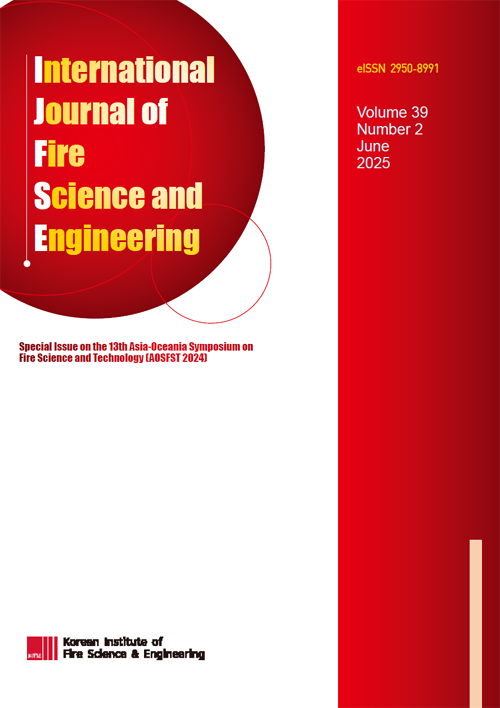Suggestion of Optimal Phased Evacuation Scenario Developing and Evaluating Methods for High-Rise Buildings
- 한국화재소방학회
- International Journal of Fire Science and Engineering
- Vol. 39, No. 2
-
2025.06148 - 163 (16 pages)
-
DOI : 10.7731/KIFSE.c14d95a5
- 0

This research proposes methods for developing and evaluating optimal phased evacuation scenarios for high-rise buildings using the SimTread evacuation simulation to analyze conditions causing congestion and those capable of responding to mass evacuation start time fluctuations. Phased evacuation is essential to prevent congestion when all occupants simultaneously move to staircases during fires, which can delay evacuation from priority floors. The study aims to develop evacuation plans that satisfy three key conditions: 1) prioritizing evacuation of floors with high fire or smoke spread risk, 2) preventing heavy congestion in staircases, and 3) maintaining continuous evacuation flow at the first-floor exit despite time intervals between phases. To achieve these objectives, methodology was developed based on evacuation drills conducted in a 25-story office building in Tokyo and simulation results. The research determined that simultaneous evacuation of no more than 400 people per phase prevents heavy congestion. Additionally, appropriate time intervals between phases were established to maintain evacuation flow continuity. To evaluate the proposed methodology's validity, three indicators were developed: 1) Flow Status Indicator at First Floor Exit (RF), 2) Staircase Indoor Congestion Indicator on Each Floor (RC), and 3) Evacuation Time Index for Allowable Time According to Combustion and Smoke Propagation Risk (RS). Through case studies with different fire floor scenarios (lower, middle, and upper floors), the research confirmed the proposed methodology effectively develops and evaluates efficient phased evacuation scenarios for high-rise buildings. The findings contribute to enhancing evacuation safety in high-rise buildings by providing systematic methods for creating phased evacuation scenarios that balance priority evacuation, congestion prevention, and overall evacuation efficiency.
1. Introduction
2. Research Overview
3. Evacuation Drill
4. Analysis of Conditions Causing the Heavy Congestion by SimTread
5. Suggestion of Method and Evaluation Method for Phased Evacuation Scenario
6. Case Study: Creating the Phased Evacuation Scenario and Evaluating of It
7. Conclusions
8. Limitations and Future Research
References
(0)
(0)